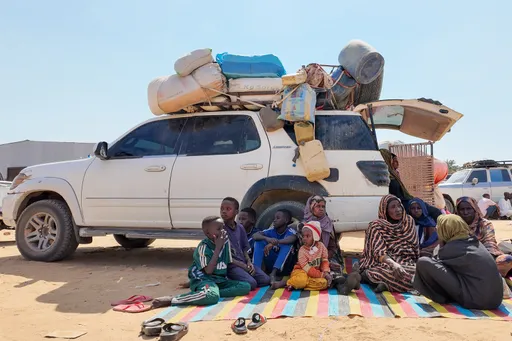Two years have passed since the catastrophic earthquakes of February 6, 2023, struck multiple Turkish provinces with magnitudes of 7.7 and 7.6.
The disaster claimed over 50,000 lives and left approximately 14 million people in Türkiye and countless others in northern Syria grappling with its aftermath.
As the country marks the second anniversary of this tragic event, the Turkish government’s housing reconstruction efforts have moved steadily.
In a televised address on January 29, President Recep Tayyip Erdogan reaffirmed the government’s commitment to rebuilding the earthquake-stricken regions, saying:
"While the national agenda may shift from day to day, our sole constant priority remains the revival and reconstruction of our earthquake-affected regions. We are working tirelessly to ensure that our brothers and sisters can move into safe, modern and comfortable homes as soon as possible."
Describing the reconstruction efforts as "the construction of the century," Erdogan emphasised the sheer scale of the operation:
"We have turned our earthquake zone into the largest construction site in the world. Across 174 different locations in 11 provinces, spanning 4,333 villages, we have deployed 182,000 architects, engineers and workers at 1,900 construction sites. Every milestone we achieve reflects the magnitude of our commitment and strength."
This ambitious initiative underscores Türkiye’s rapid and comprehensive recovery efforts, which continue to shape the future of affected communities.
According to the Ministry of Environment, Urbanisation, and Climate Change, around 201,580 independent units have been delivered to date to the affected people, consisting of 169,171 homes, 149 workplaces and 32,260 village houses. This represents 45 percent of the total homes planned for construction in the earthquake zone.
The government aims to deliver a total of 452,983 independent units by the end of 2025, ensuring affected communities have secure housing and stable infrastructure.
To further support earthquake survivors, the government has introduced the On-Site Transformation programme, providing significant financial aid for those rebuilding their homes and workplaces. The programme includes thousands of dollars of grants and loans for affected individuals.
To date, $580 million have been allocated for licensed independent sections, and Iller Bank has provided an additional $1.8 billion for infrastructure projects in the earthquake zone.
From the moment the disaster struck, Türkiye launched a nationwide mobilisation effort. Damage assessments were swiftly conducted, identifying affected buildings and their rightful owners.
The earthquake zone was examined to ensure a thorough and effective response. This led to one of the world’s most extensive debris removal operations, clearing destruction at a speed unmatched by many developed nations.
A large-scale construction initiative, equivalent in magnitude to rebuilding an entire European country, was launched. Türkiye’s Housing Development Administration (TOKİ) played a crucial role in implementing earthquake-resistant structures that proved their resilience during the disaster.
One earthquake survivor reflected on the government's response, "It felt like the end of the world. But the state took responsibility. They didn’t play politics — they got to work."
Türkiye’s primary goal extends beyond rapid reconstruction: it seeks to ensure that future generations will never face such devastation again.
Every step of the rebuilding process prioritises safety and resilience. Alongside new homes and businesses, social spaces and public buildings have been constructed, while historical sites have been meticulously restored.
Currently, a construction workforce of 182,000 people is working across 3,481 construction sites in 174 different areas spanning 11 provinces. To date, 201,580 housing units, workplaces and village homes have been completed and handed over to their rightful owners.
























